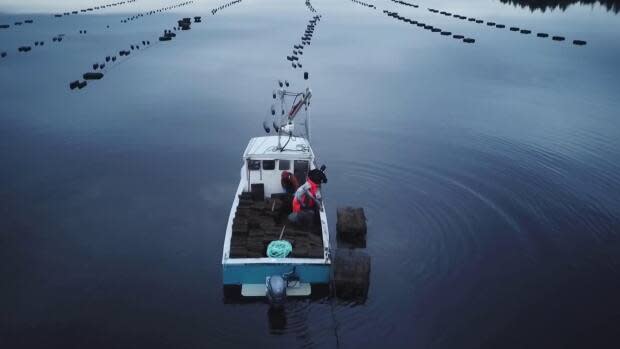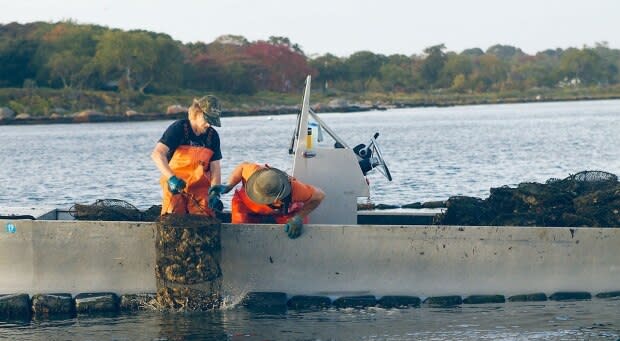N.S. municipality looks to create 'business park on the sea' for oyster farming
A municipality in southwestern Nova Scotia that boasts ideal conditions for farming oysters wants producers to know it's open for business.
The Municipality of the District of Argyle, which includes communities such as Pubnico, Tusket and Wedgeport, has identified 19 ocean sites it hopes to lease to companies interested in farming oysters.
This "business park on the sea" is one of the first aquaculture developments of its kind in Canada, according to the municipality.
"There's a large body of water that is quite warm and oysters grow there naturally," Charlene LeBlanc, the municipality's community development officer, told CBC's Information Morning.
A handful of farms have operated in the waters off the Municipality of the District of Argyle for about 20 years, but LeBlanc said it's not easy to get the necessary permits.

"There's a lot of red tape into getting a lease, so we thought that we'd make it easier for investors to get into business for the shellfish," LeBlanc said.
As part of that, the municipality has gathered oceanographic data on currents and tides, as well as biophysical data.
"We've been doing the legwork making it to able to get to lease a lot faster," she said.
In 2017, the Municipality of the District of Argyle received provincial funding and started working with the province to test water quality at several sites.
"What we need to grow oysters is good pH, nice warm temperature, which we have, salinity and phytoplankton. And it's the perfect recipe in our waters," LeBlanc said.

She said municipal staff also needed to make sure the currents were ideal and the sites didn't impede the view of homeowners or get in the way of lobster fishermen.
Because oysters are suspended in the water in black mesh bags, they can cast a shadow on species below, including eelgrass.
"We certainly are not going to pick any sites that are going to be on top of eelgrass," LeBlanc said.
Sarah Stewart-Clark, an associate professor of shellfish biology at Dalhousie University, said determining where to set up a farm has a lot to do with how much phytoplankton is there for the oysters to eat.
"You would never take the entire surface of a bay and float oyster cages in it," she said. "It''s always in mind, how do we farm these filter feeders in a way that's not going to harm the environment?"

Stewart-Clark said oyster farming doesn't share the same reputation as open-pen salmon farms, which have been criticized for their use of pesticides, antibiotics and the waste that's produced.
She said when the oysters eat tiny phytoplankton, they also filter the water.
"The farmers are simply adding oysters to the estuary," Stewart-Clark said. "All of the food, all of the oxygen, everything that's required for the oysters to grow, comes from the natural ecosystem."
Strong demand for oysters
Nova Scotia can't keep up with the demand for oysters, she said.
"Sometimes on an oyster farm, oysters that are two years away from maturity are already sold, so the market is there," she said.
The province produces about $3 million worth of farmed oysters a year, according to Stewart-Clark, while Prince Edward Island and New Brunswick produce $13 million and $12 million, respectively.
"We really play up our seafood production and when it comes to shellfish, we're not keeping up with the other Maritime provinces," she said.
MORE TOP STORIES


